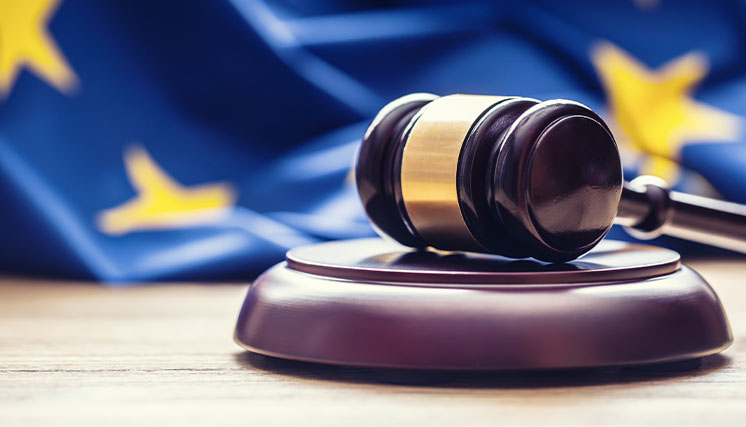Table of contents
The eIDAS regulation: foundation of electronic signature legal validity
The eIDAS Regulation No 910/2014 serves as the primary legal framework governing electronic signatures across all EU member states. This regulation established a harmonized approach to electronic identification and trust services, ensuring that electronic signatures have the same legal validity as handwritten signatures when specific conditions are met. Under eIDAS, there are three distinct types of electronic signatures, each with different legal implications:- Simple Electronic Signature (SES): Basic form of electronic signature with minimal security requirements
- Advanced Electronic Signature (AdES): Enhanced security with cryptographic protection and signer identification
- Qualified Electronic Signature (QES): Highest level of security, equivalent to handwritten signatures in all legal contexts
Technical security requirements for legal validity
The electronic signature legal framework requires specific technical safeguards to ensure document integrity and signer authentication. These security measures form the foundation of legally valid electronic signatures.Hash functions and document integrity
Hash functions play a crucial role in maintaining document integrity throughout the electronic signature process. When a document is signed electronically, a unique digital fingerprint (hash) is created. This cryptographic function ensures that any alteration to the document after signing can be immediately detected, providing irrefutable proof of document tampering.Qualified timestamping and authentication
Qualified timestamping services provide legally recognized proof of when a document was signed. This timestamp, issued by certified time-stamping authorities, creates an immutable record that can be verified independently. The timestamp ensures that the electronic signature legal requirements for chronological evidence are met, particularly important in contractual disputes or regulatory compliance scenarios.French civil code and national implementation
While eIDAS provides the overarching EU framework, individual member states have implemented specific national provisions. In France, Article 1367 of the Civil Code reinforces the legal validity of electronic signatures, stating that electronic signatures have the same probative value as handwritten signatures when the identity of the signatory is properly established and document integrity is maintained. The French National Agency for Information Systems Security (ANSSI) oversees the supervision and certification of qualified trust service providers, ensuring compliance with both national and European standards for electronic signature legal validity.Legal requirements for valid electronic signatures
For an electronic signature to be legally valid under EU law, several key requirements must be fulfilled:- Reliable signer identification: The signature must be uniquely linked to the signatory through robust authentication methods
- Document integrity guarantee: Technical measures must ensure that any subsequent changes to the document are detectable
- Signer control: The signature creation data must be under the sole control of the signatory
- Non-repudiation: The signature must provide evidence that prevents the signer from denying their action
Advanced electronic signature requirements
Advanced Electronic Signatures (AdES) must meet additional criteria beyond simple electronic signatures:- Use of a qualified certificate for electronic signatures
- Creation by a qualified electronic signature creation device
- Implementation of cryptographic security measures
- Compliance with technical standards defined in eIDAS implementing acts
Practical applications and judicial recognition
Electronic signatures have gained widespread acceptance in European courts, with numerous successful cases demonstrating their legal validity. Tribunals across EU member states have consistently recognized electronic signatures when proper technical and procedural safeguards are in place.Real-world legal applications
Electronic signature legal validity has been tested and confirmed in various practical scenarios:- Commercial contracts: B2B agreements signed electronically are routinely upheld in commercial disputes
- Employment agreements: HR departments rely on electronic signatures for employment contracts and policy acknowledgments
- Financial services: Banks and insurance companies use qualified electronic signatures for loan agreements and policy documents
- Real estate transactions: Property sales and lease agreements increasingly use electronic signatures with full legal recognition
Timestamping in legal proceedings
Qualified timestamps have proven particularly valuable in legal proceedings, providing indisputable evidence of when documents were created, modified, or signed. This temporal evidence is crucial in establishing the sequence of events in contractual disputes or regulatory investigations.Best practices for electronic signature legal compliance
To ensure maximum legal protection, organizations should implement comprehensive electronic signature policies that address:- Selection of qualified trust service providers
- Implementation of appropriate signature levels based on document importance
- Maintenance of audit trails and signature evidence
- Regular compliance reviews and policy updates
- Staff training on electronic signature legal requirements
Cross-border recognition and international validity
One of eIDAS regulation’s most significant achievements is ensuring cross-border recognition of electronic signatures throughout the European Union. A qualified electronic signature issued in one member state must be recognized as legally valid in all other member states, facilitating seamless international business operations. This mutual recognition principle eliminates the need for businesses to navigate different national electronic signature laws when operating across EU borders, significantly simplifying compliance requirements for multinational organizations.Future developments in electronic signature law
The electronic signature legal landscape continues to evolve, with ongoing developments including:- Enhanced mobile signature solutions
- Integration with blockchain technology
- Improved biometric authentication methods
- Strengthened cybersecurity requirements
Legal assurance of Signaturit’s advanced electronic signature
Signaturit’s advanced electronic signature solution complies with key legal frameworks, including the EU’s eIDAS Regulation and U.S. laws such as the ESIGN Act and UETA.
To ensure legal validity and evidentiary strength, the system integrates:
-
Signer identification: Combines biometric data, geolocation, device metadata, and—if needed—voice or image capture to reliably link the signature to the individual.
-
Document integrity: Uses public/private key cryptography to detect any post-signature modification in both the signed file and its evidentiary record.
-
Time-stamped evidence: All data is encrypted and time-stamped by a trusted authority to ensure long-term integrity and traceability.
-
Signer binding and control: Each signature is tied to a unique identifier and created exclusively through the signer’s authenticated device and account.
These features are designed to meet legal standards and hold up under regulatory or judicial scrutiny without reliance on marketing assurances.
👉 Need clarity on legal fit? Contact our experts for legal and technical insights specific to your case.




